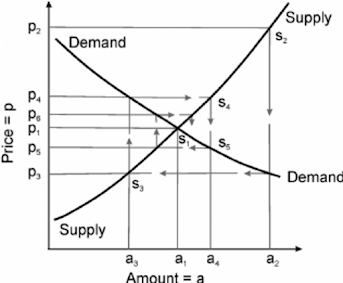Cobweb theory has played an important role in explaining the endogeneity of price and production cycles in commodity markets. Empirical testing of cobweb models looked into whether 'short run' supply and demand elasticities could cause market instability. Cobweb theory holds that price fluctuations can cause supply fluctuations, resulting in a cycle of rising and falling prices.
In a simple cobweb model, we assume an agricultural market with variable supply due to factors such as weather.
Assumptions of
Cobweb theory
• In an
agricultural market, farmers must decide how much to produce a year ahead of
time, even before they know what the market price will be. (Short-term supply
is price inelastic)
• The
previous year's price will be a key determinant of supply.
• Because
of the low price, some farmers will go out of business. A low price will also
discourage farmers from growing that crop the following year.
•
Agricultural goods demand is typically price inelastic (a decrease in price
causes a smaller percentage increase in demand).
Criticism of Cobweb Theory
1. This is not strictly a trade cycle theorem because it only
applies to the farming sector. There are numerous other areas of production
where it says nothing.
2. This theorem assumes that output is entirely determined by
price. As a result, this is an unrealistic assumption. In reality, the output
of farm products, in particular, is determined by several other factors,
including weather and the prices of the factors of production.
3. It is applicable only where:
i. The price is determined by
the available supply.
ii. When production is governed solely by price considerations as
in greater perfect competition.

Comments
Post a Comment